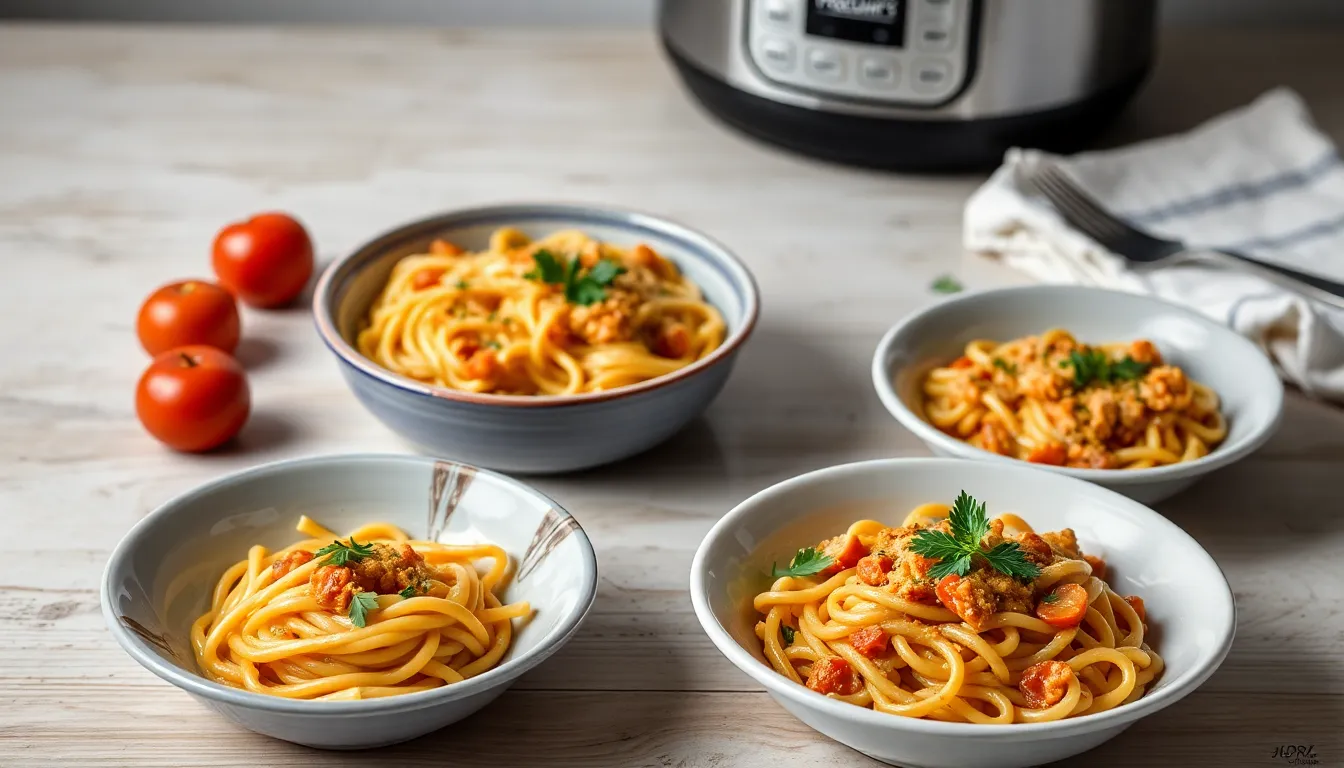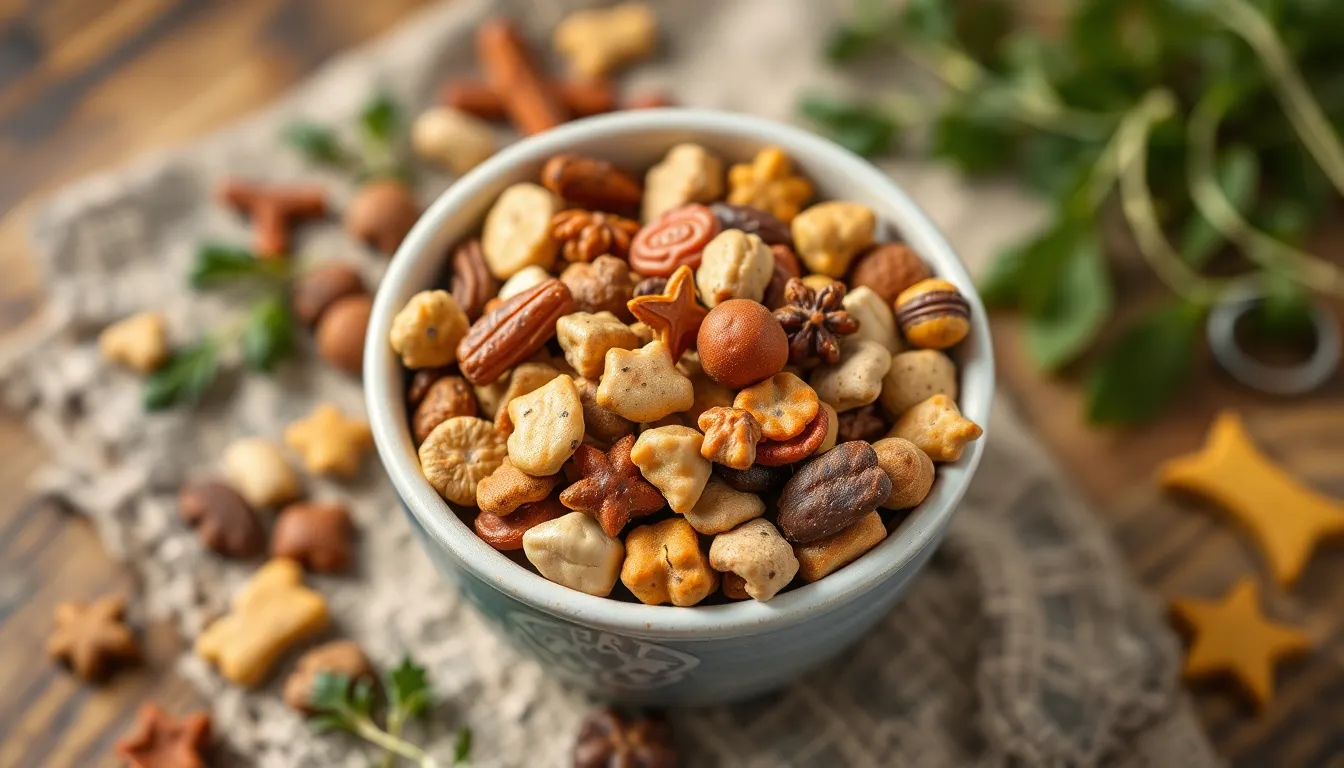The Ultimate Pressure Cooker Pasta Dishes
Introduction
Pressure cooking has revolutionized the way we prepare meals in the kitchen, especially when it comes to pasta dishes. With its ability to cook food quickly and efficiently, a pressure cooker can help you whip up delicious meals in a fraction of the time compared to traditional cooking methods. Not only does it save time, but it also enhances the flavors and textures of the ingredients, allowing for a versatile range of pasta dishes.
In this post, we will explore various pressure cooker pasta recipes that are sure to impress your family and friends. From classic spaghetti and meatballs to creamy Alfredo penne, each dish promises to be a delightful experience for your taste buds. Let’s dive right in!
Section 1: Understanding Your Pressure Cooker
1.1 Types of Pressure Cookers
Before delving into delicious recipes, it’s crucial to understand the types of pressure cookers available.
- Electric Pressure Cookers: These are plug-in appliances that automatically manage cooking times and pressure levels. They offer a variety of settings and are user-friendly.
- Stovetop Pressure Cookers: These require a stovetop to generate heat and allow for more manual control over pressure and cooking times. They tend to be more powerful and cook food faster.
Advantages and Disadvantages:
| Type | Advantages | Disadvantages |
|---|---|---|
| Electric | Easy to use, versatile settings, safe | Slower cooking times compared to stovetop |
| Stovetop | Faster cooking, more control | Requires more monitoring, can be intimidating for beginners |
1.2 Safety Tips
Safety should always be your top priority when using a pressure cooker. Here are some key safety features and best practices:
- Look for cookers with safety locking mechanisms.
- Always allow natural pressure release when necessary to avoid splattering.
- Regularly check the sealing ring for wear and tear.
Section 2: Essential Ingredients for Pressure Cooker Pasta Dishes
2.1 Pasta Varieties
When preparing pasta in a pressure cooker, not all pasta types are created equal. Some varieties work better than others due to their cooking times and textures. Here’s a quick overview:
- Penne: Cooks in about 4 minutes.
- Fusilli: Cooks in about 5 minutes.
- Spaghetti: Cooks in about 6 minutes.
2.2 Flavorful Add-ins
To elevate your pressure cooker pasta dishes, consider adding proteins, vegetables, and sauces. Here’s a list of great add-ins:
- Proteins: Chicken, ground beef, sausage, shrimp.
- Vegetables: Bell peppers, spinach, mushrooms, zucchini.
- Sauces: Marinara, Alfredo, pesto, and more.
Ingredient Pairings for Pressure Cooker Pasta
| Ingredient Type | Examples | Cooking Time (minutes) |
|---|---|---|
| Pasta | Penne | 4 |
| Protein | Chicken | 10 |
| Sauce | Marinara | 5 |
Section 3: Top Pressure Cooker Pasta Recipes
3.1 Classic Spaghetti and Meatballs
This timeless dish is a favorite among many, and making it in a pressure cooker cuts down on cooking time significantly.
Ingredients:
- 1 lb ground beef
- 1 cup breadcrumbs
- 1 egg
- 1 jar marinara sauce
- 1 lb spaghetti
- Salt and pepper to taste
Instructions:
- In a bowl, mix ground beef, breadcrumbs, egg, salt, and pepper. Form into meatballs.
- Select the sauté function on your pressure cooker and brown the meatballs on all sides.
- Add marinara sauce and uncooked spaghetti to the pot, ensuring the spaghetti is submerged.
- Seal the pressure cooker and cook on high for 8 minutes.
- Quick release the pressure, serve hot, and enjoy!
Tips for Perfecting the Dish:
For a richer flavor, try adding grated Parmesan cheese into the meatball mixture.
3.2 Creamy Alfredo Penne
This creamy delight is perfect for a comforting dinner. The pressure cooker makes it quick and easy!
Ingredients:
- 1 lb penne pasta
- 2 cups heavy cream
- 1 cup grated Parmesan cheese
- 2 tablespoons butter
- Salt and pepper to taste
Instructions:
- Add penne, butter, heavy cream, salt, and pepper to the pressure cooker.
- Seal the lid and cook on high for 4 minutes.
- Quick release the pressure and stir in the Parmesan cheese until creamy.
Variations for a Lighter Version:
Substitute heavy cream with half-and-half or use low-fat cheese for a healthier option.
3.3 One-Pot Pesto Pasta with Vegetables
This vibrant dish allows you to incorporate fresh vegetables and herbs, making it both nutritious and delicious.
Ingredients:
- 12 oz pasta of choice
- 1 cup pesto sauce
- 2 cups mixed vegetables (e.g., zucchini, bell peppers)
- 1 cup vegetable broth
Instructions:
- Combine pasta, vegetables, and vegetable broth in the pressure cooker.
- Seal and cook on high for 5 minutes.
- Once done, quick release, stir in pesto, and serve warm.
Suggestions for Customization:
Feel free to add grilled chicken or shrimp for extra protein!
3.4 Spicy Sausage and Peppers Pasta
This dish packs a flavorful punch with the addition of spicy sausage and bell peppers.
Ingredients:
- 1 lb spicy Italian sausage, sliced
- 1 bell pepper, sliced
- 1 onion, sliced
- 1 lb pasta
- 1 jar marinara sauce
Instructions:
- Using the sauté function, cook the sausage until browned.
- Add bell peppers, onion, pasta, and marinara sauce.
- Seal and cook on high for 5 minutes.
- Quick release, stir, and serve with grated cheese on top.
Serving Suggestions:
Pair this dish with a side salad for a complete meal!
Section 4: Troubleshooting Common Issues
4.1 Undercooked or Overcooked Pasta
Finding the right cooking time is crucial for perfectly cooked pasta. If you encounter undercooked or overcooked pasta, consider these tips:
- Adjust cooking times according to pasta variety.
- Utilize the natural pressure release method to finish cooking.
4.2 Sauces Not Thickening
Sometimes, sauces may turn out too watery. Here are some remedies:
- If sauce is too thin, simmer it on the sauté function after releasing pressure.
- Consider adding thickening agents such as cornstarch or flour.
Section 5: Storing and Reheating Pressure Cooker Pasta Dishes
5.1 Proper Storage Techniques
To ensure your pressure cooker pasta dishes remain fresh, follow these storage techniques:
- Store in airtight containers to prevent moisture loss.
- Label and date your containers for easy identification.
How Long Dishes Can Be Stored: Most pasta dishes can be stored in the refrigerator for 3-5 days. For longer storage, consider freezing.
5.2 Reheating Tips
When reheating pasta dishes, it’s essential to maintain texture and flavor:
- Use the microwave with a splash of water to prevent dryness.
- For stovetop reheating, add a bit of broth and stir frequently.
Conclusion
Pressure cooking pasta dishes is not only time-efficient but also yields flavors that are rich and satisfying. This method opens the door to endless possibilities, encouraging you to experiment with different ingredients and flavors. We hope you feel inspired to try these recipes and make them your own!
We would love to hear about your favorite pressure cooker pasta recipes, so don’t hesitate to share them in the comments below!
Additional Resources
For more insights into pasta and pressure cooking, check out our related articles:
- 10 Easy Pasta Recipes for Busy Weeknights
- Choosing the Right Pressure Cooker for Your Kitchen
- Essential Tools for Every Home Cook
Recommended Pressure Cooker Models and Accessories:
- Instant Pot Duo 7-in-1
- Presto 6-Quart Stainless Steel Pressure Cooker
- Best Pressure Cooker Accessories Kit
Call to Action
If you enjoyed this article, be sure to subscribe to spicestoryteller.com for more delicious recipes and cooking tips!




